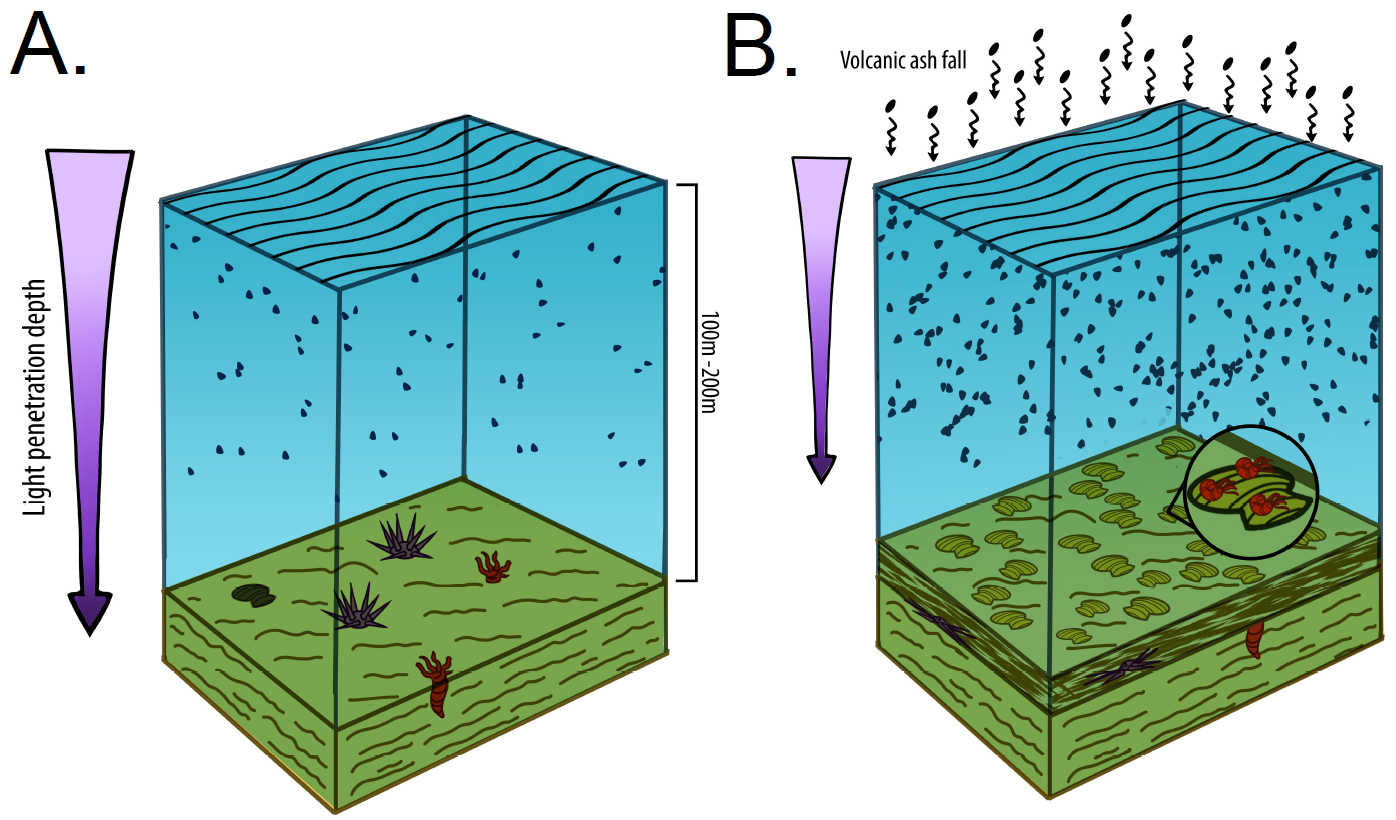
An international team of researchers at the University of Calgary and the Nanjing Institute of Geology and Palaeontology, Chinese Academy of Science have shown just how precarious the recovery of life was following Earth’s greatest extinction event, about 251.9 million years ago. A site near Shangsi in Sichuan Province, China highlights a short-lived community of organisms that may hold clues to forces shaping our planet today and into the future.
Graduate student Amanda Godbold, Postdoctoral Fellow Shane Schoepfer, and Professors Shuzhong Shen and Charles Henderson are co-authors on a paper published online May 1, 2017 in Geology entitled “Precarious ephemeral refugia during the earliest Triassic”. Their findings highlight an assemblage including microbial mats, trace fossils, bivalves, and echinoids that represent a refuge in a moderately deep-water setting. A refuge describes an ecosystem that acts as a sanctuary for organisms during and immediately following times of environmental stress. The echinoids normally live in shallow-water environments, but in this case they sought refuge from lethally hot surface waters. The culprit was global warming associated with massive volcanic eruptions in Siberia, but modern-day events may lead to similar changes in today’s oceans.
The community was short-lived, and was extinguished by a relatively minor ecologic disturbance as determined from the geochemistry of the host rocks, only to be replaced by a low-diversity community of ‘disaster taxa’, opportunistic organisms that thrive while others go extinct. The team envisages the earliest Triassic ocean floor as a shifting patchwork of temporary or ephemeral refugia, in which some communities survived and others died off depending on local conditions. As conditions improved throughout the Early Triassic these communities no longer had to cling to life in ephemeral refugia, but could expand into normal habitats around the world. The echinoids at this site are the ancestors of a diverse group of modern echinoids or sea urchins that live in reef communities, rocky shorelines and sandy shelves today.
The study will help bring about a deeper understanding of how modern oceans might respond to intense global warming due to natural or anthropogenic effects. It could inform the management of our oceanic resources as they continue to be affected by environmental stressors. The rock record is cryptic, but it records events that have run their full course. If we can decipher the story, then it is possible to inform us better as to what might happen in the future as changes to our environment continue to occur.
This study was supported by the National Science Foundation of China, the Strategic Priority Research Program (B) of the Chinese Academy of Sciences, and a Natural Sciences and Engineering Research Council of Canada (NSERC) Discovery Grant.
Contact:
Charles Henderson; cmhender@ucalgary.ca
Shuzhong Shen; szshen@nigpas.ac.cn
